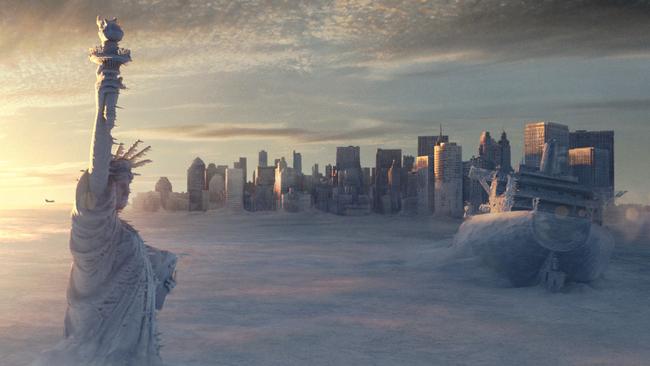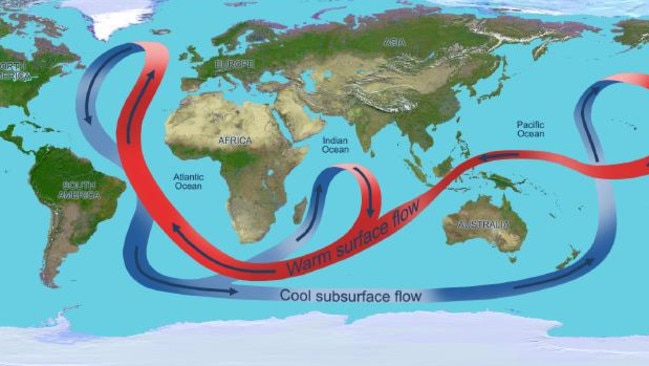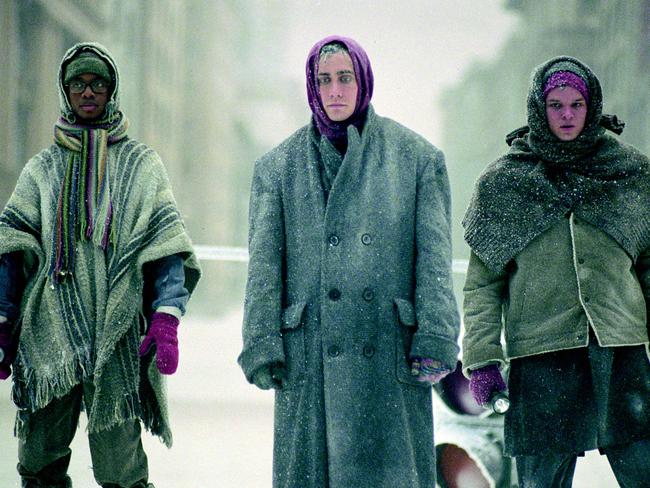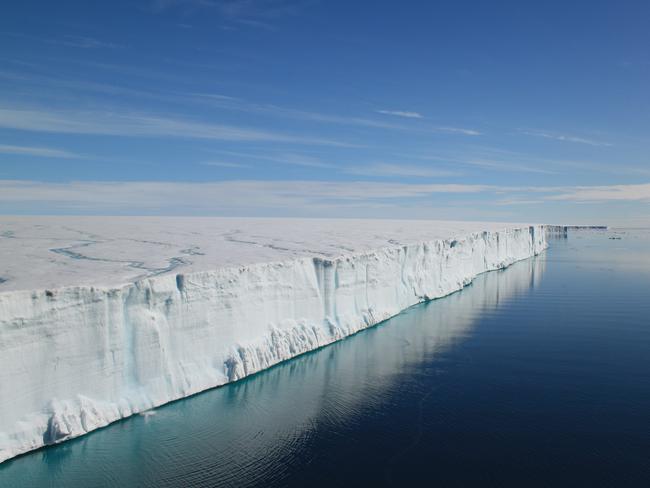New climate modelling shows the conditions portrayed in The Day After Tomorrow movie are not so far fetched
IT WAS considered a climate doomsday movie of pure fiction. But new modelling shows that the theory behind the disaster movie is scientifically credible.

WHEN the hit doomsday movie The Day After Tomorrow was released in 2004, climate scientists laughed off the credibility of the threat depicted in the film. But fresh research by UK climatologists suggests it is more plausible than previously thought.
Researchers at Southampton University have put the scenario to the test and believe a similar, albeit less catastrophic, version could conceivably take place.
In the movie, global warming precipitates an abrupt collapse in a major current system in the Atlantic Ocean known as the Atlantic Meridional Overturning Circulation (AMOC). The current is an important component of the earth’s climate system and acts a conveyor belt by delivering warm, salty water northward from the tropics where the heat is transferred into the atmosphere. Simultaneously, the current system drags cooler water southward and in the process keeps Europe and North America warmer than it would otherwise be.
Any significant disruption to the current is thought to hold serious implications.
But according to scientists at the university, even though the scientific credibility of the disaster film was dismissed, the scenario of an abrupt collapse of AMOC caused by global warming was never tested with sophisticated climate modelling.
So that’s exactly what they did.

By using an atmospheric general circulation model known as ECHAM, Professor Sybren Drijfhout found that for a period of 20 years, Earth would cool if global warming and a collapse of AMOC were to occur simultaneously.
The study, published in the journal Nature, said such a scenario would “obliterate” global warming for the roughly 15 to 20 years, offsetting global temperatures by 0.8C. The resulting surface cooling would last for 40 to 50 years.
“The planet Earth recovers from the AMOC collapse in about 40 years when global warming continues at present-day rates, but near the eastern boundary of the North Atlantic (including the British Isles) it takes more than a century before temperature is back to normal,” Professor Drijfhout said in a statement from the university.

The paper goes onto note that such a scenario would result in heat flow from the atmosphere into the ocean which is something that has already been witnessed over the last 15 years during a period of climate hiatus — also referred to as a global warming slowdown or global warming pause.
As Salon notes: “Indeed, exactly this process seems to be under way.”
However the cause of the recent period of very weak warming cannot be attributed to one factor and is a likely a result of the El Niño weather pattern, volcanic eruptions or decreasing greenhouse emissions.
While the The Day After Tomorrow certainly exaggerated the potential calamity of such a scenario, the possibility that it could occur has been hypothesised by scientists for decades.
Twenty five years ago, leading climate scientist Wally Broeker warned of a potential severe cold snap if the greenhouse build-up induced a shut down of the ocean’s current conveyor. However he suggested that such an outcome was unlikely and would require a 4C warming of the atmosphere.
“There has long been speculation that climate change might cause more melt from Greenland and that extra freshwater might weaken the Gulf Stream and that would cool the UK and other parts of Europe,” Dr Colin Butler from University of Canberra told news.com.au. “But when I last checked this was still thought to be decades away.”




